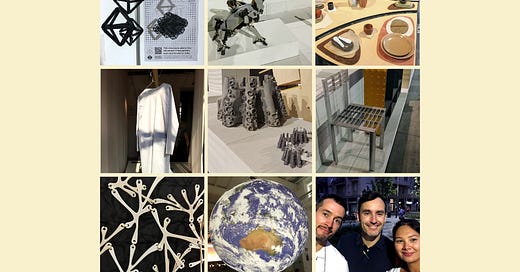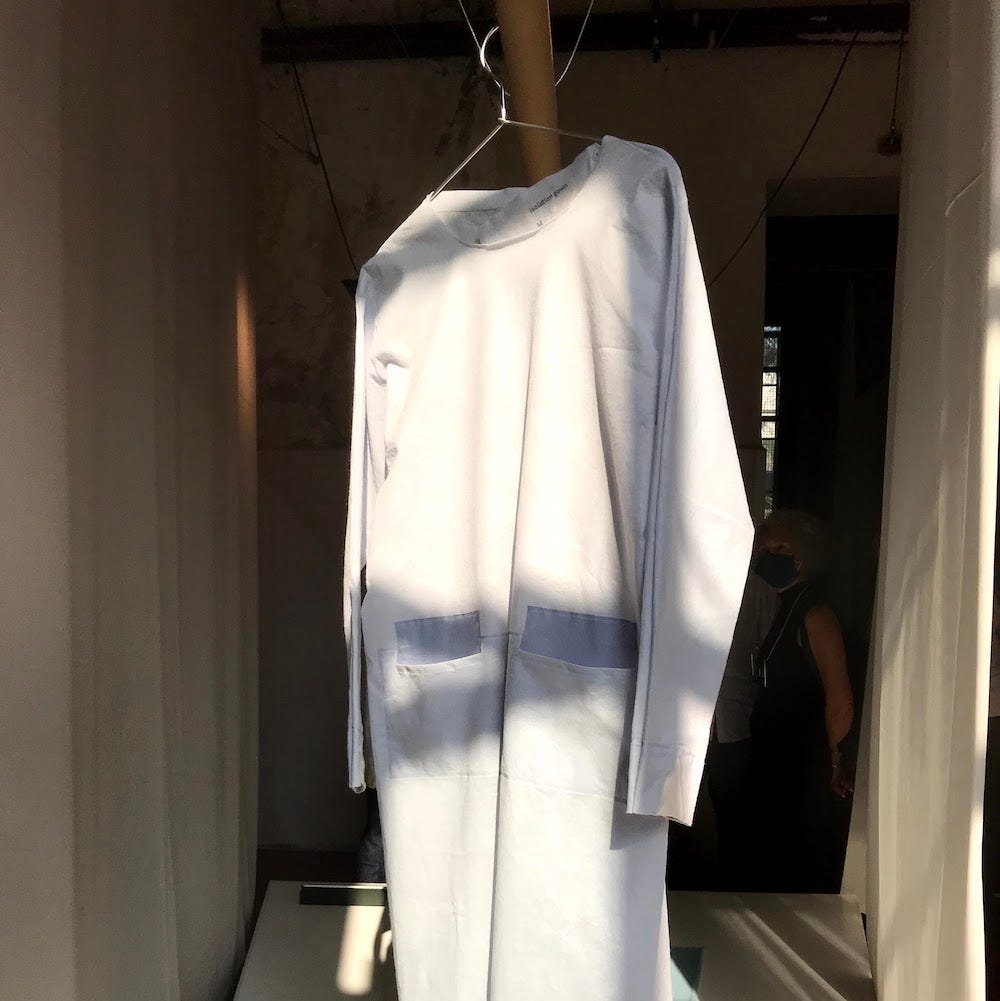Design and Decarbonization: Our Seven Favourite Objects from the Milano Design Week
Climate Pioneers No. 14: Discover seven objects at the intersection of design and climate action in this article and in a short online session.
Receive stories and surprises about climate solutions directly in your inbox.
Earlier this month we ventured out from behind our screens to the real world. At the design week in Milano we had plenty of eye-pinching moments.
In this number, you will get to learn about seven particularly interesting findings (click on the images and links further below to get more details) in random order.
Enjoy!
A) Activated carbon parts clean dirty air in subway stations and turn pollution into pastels by Marie Melcore
Pollution is pretty bad for your lungs, but also for your brain. Design researcher Marie Melcore made structures of activated carbon parts that are able to filter fine particles from the air and make polluted spaces like subway stations more breathable. The parts are made from upcycling food waste. When deconstructed, they can be used as pastels. From waste to art. Discovered in the Isola Design District exhibition Materialized.
B) Robotic forest ranger: “Chunk” is responsible for sawing, pruning and mowing by Segev Kaspi
Reforestation efforts can contribute much to solving the climate crisis – but who will take care of all the newly-created forests? Segev Kaspi designed a family of robotic forest caretakers: “Chunk is responsible for sawing, pruning and mowing; Dixon, for planting, reforestation of seedlings, and cuttings; Rikko, for gathering, monitoring and analysing data from the forest.”
C) A table and dishes made from industrial food waste by Studio Traccia
All the dishes and cutlery on this table are made from food waste. Industrial food waste from today (like rice husks for example) can become tableware tomorrow. What's best: even the tabletop is made from materials sourced from organic waste. Tabula non Rasa was designed by Studio Traccia.
D) A 100% biodegradable gown for healthcare professionals by Benjamin Bichsel
In hospitals, disposable clothing is an unavoidable part of safety procedures. It protects both the staff and the patients against infections and transmissible diseases. However, this procedure causes tons of synthetic textile waste. Our talented compatriot Benjamin Bichsel created a 100% biodegradable medical clothing line.
E) Artificial reefs to provide a new home for fish and friends by Anna Kaiser and Kyo Mangold
Natural coral reefs are dying because of warming and acidifying oceans. Anna Kaiser and Kyo Mangold created Coral City, a structure that can provide a home to coral larvae, allowing them to grow even in warmer temperatures.
F) Repurposed street material: Furniture made from materials found in cities by Haruka Isono
Why drive to the IKEA in the suburbs if you can just assemble your furniture from within your urban neighbourhood? Haruka Isono designed a series of unconventional furniture pieces. This chair is made of grating metals that are typically found in the streets. This kind of repurposing could be an early example of urban mining in the field of furniture design.
G) Plastic that smells good and biodegrades within 60 to 120 days by Crafting Plastics
This is a 3D-printed room-divider. The special thing about it is that it’s made from 100% renewable resources and, unlike regular plastic, this one smells good. When it has come to the end of its lifecycle, the “BreaZea” can be placed in an industrial compost, where it will biodegrade within 60 to 120 days.
Now it’s your turn: Which one is your favourite object from the selection above? Cast your vote in this survey. If you are also interested in further exploring these findings with some of the designers, we invite you for a short online session on October 5th at 4pm CET - Sign up at the bottom of the survey for the meeting link (max. 100 participants). The vote is over, here are the results:











